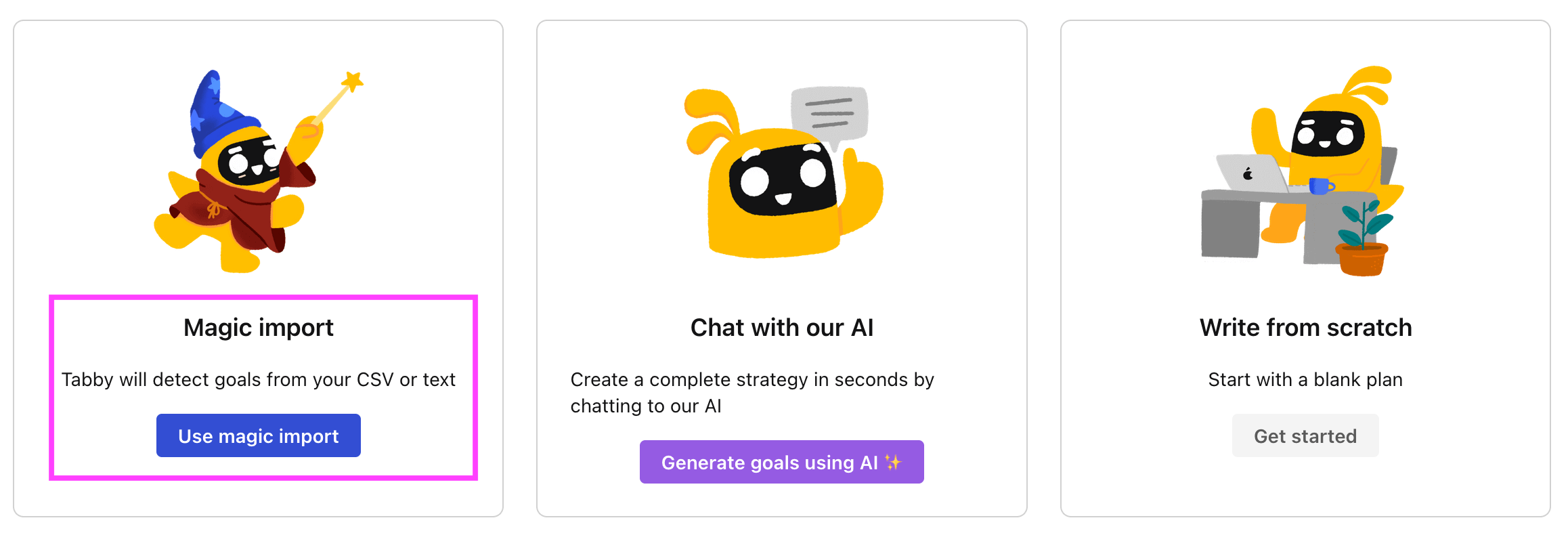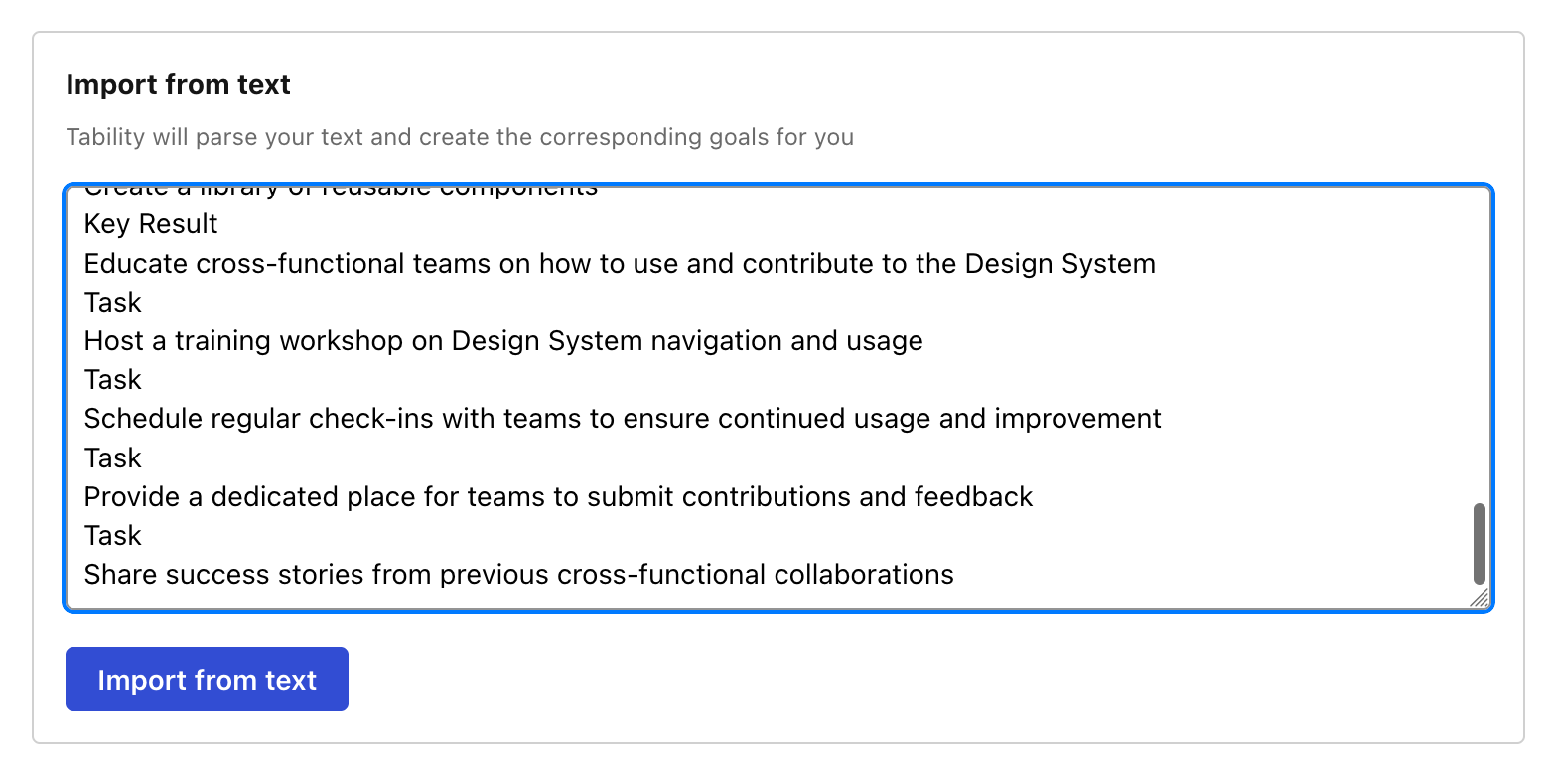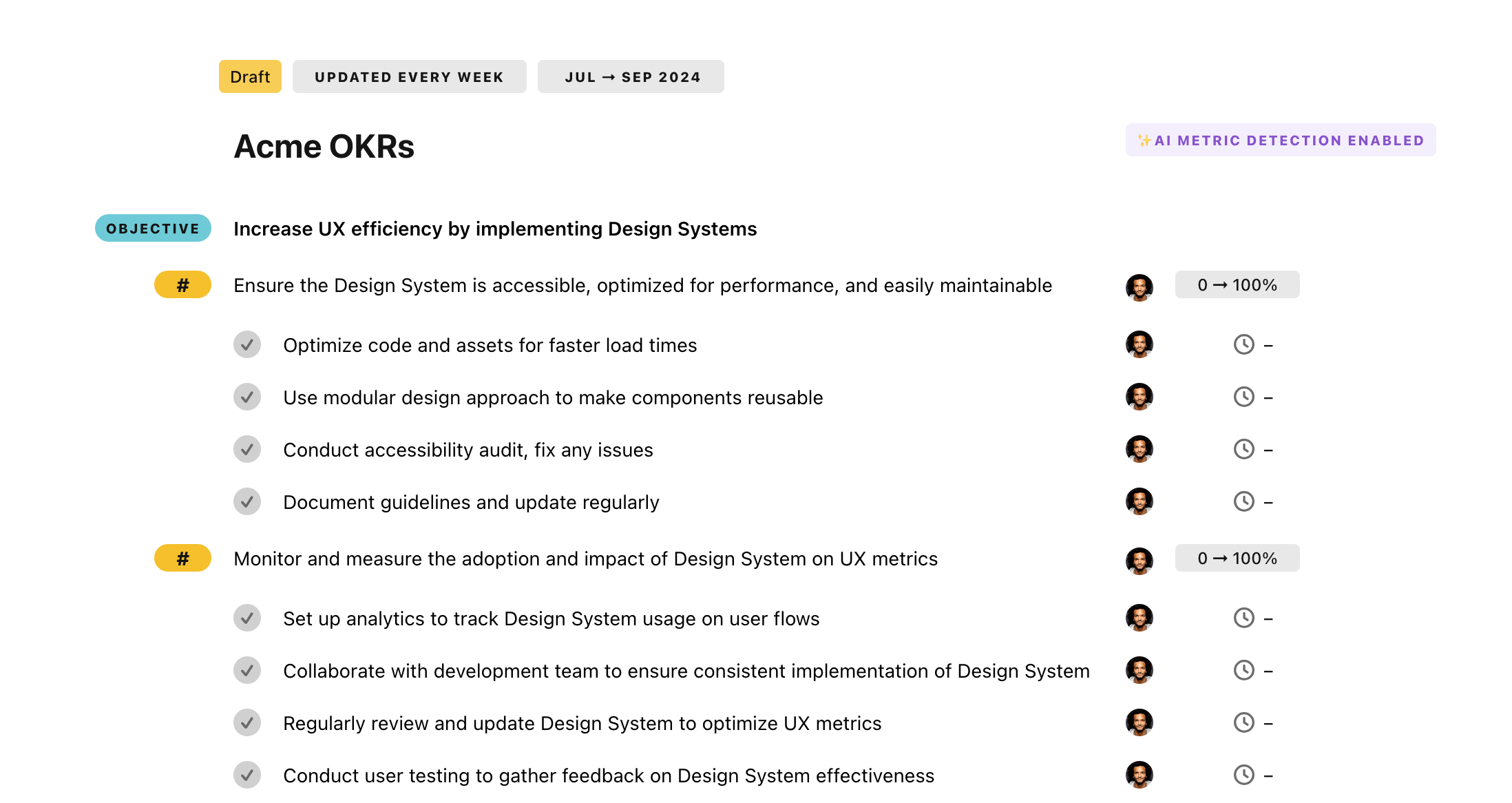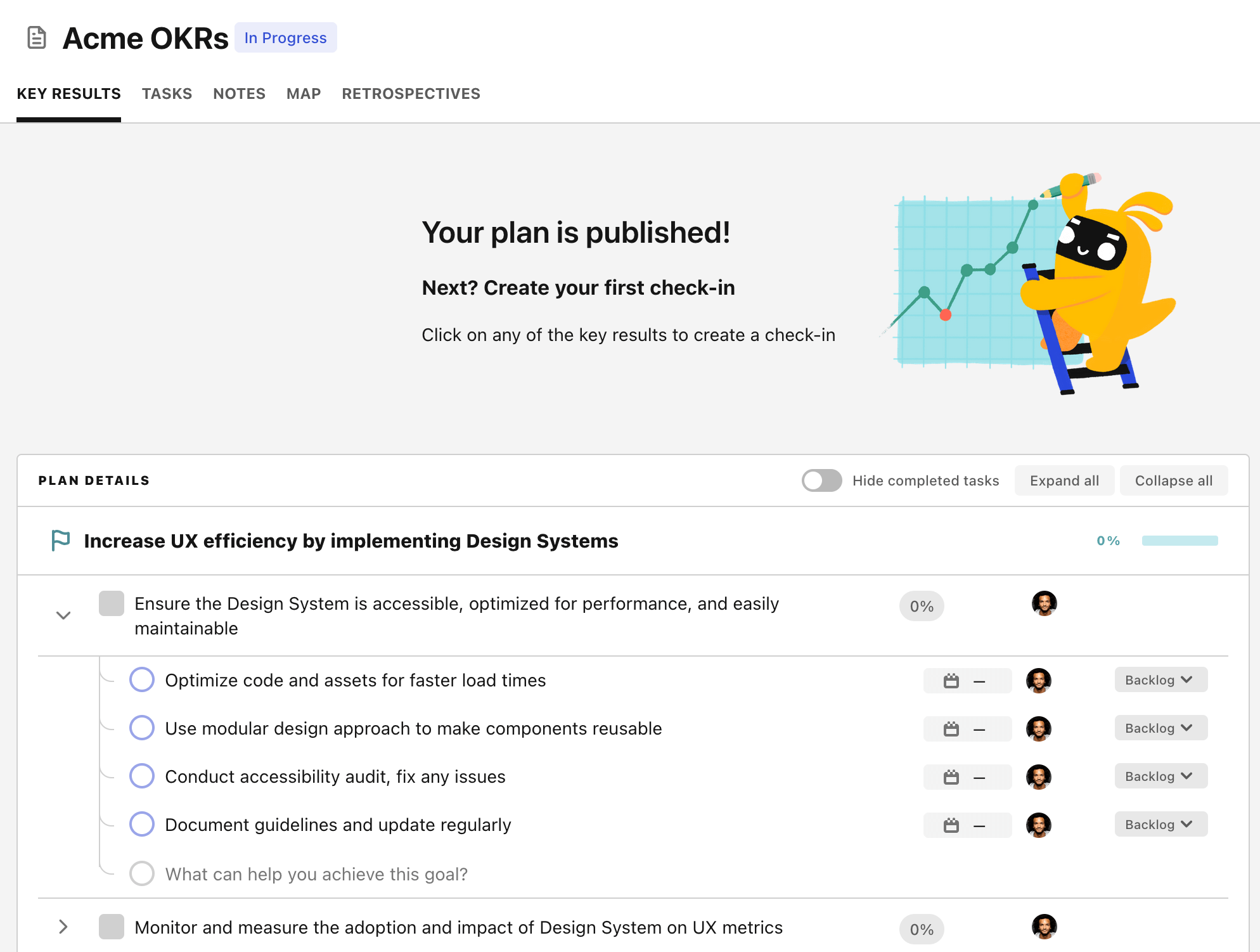OKR template to successfully rebrand two custom studios
Your OKR template
A vital part of the rebranding process involves introducing the new brands to the target audience through engaging marketing campaigns. The success of these campaigns will be monitored and evaluated for audience engagement. New brand demographics will also be identified for targeted marketing campaigns.
Thirdly, another objective is to finalize new brand names through a team-centric approach. This will involve motivating team participation in discussions, voting for the top names and scheduling brainstorming sessions for name ideas.
Overall, the OKR aims to strengthen the brand's standing in the market through rebranding, targeted marketing, and inclusive decision-making in rebranding aspects.
ObjectiveSuccessfully rebrand two custom studios
KRMeasure market response to rebranding; aim for 20% brand recognition increase
Analyze social media engagement and metrics after rebranding
Conduct surveys to gauge customer perception post-rebranding
Evaluate sales data to measure increase in brand recognition
KRIntroduce new brands via engaging marketing campaigns to target audience
Design engaging marketing materials to introduce new brands
Monitor and evaluate campaign success and audience engagement
Identify new brands and demographics for targeted marketing campaigns
KRFinalize new brand names by involving team in brainstorming sessions
Encourage team participation in discussions
Decide top names through voting
Schedule brainstorming sessions for naming ideas
How to edit and track OKRs with Tability
You'll probably want to edit the examples in this post, and Tability is the perfect tool for it.
Tability is an AI-powered platform that helps teams set better goals, monitor execution, and get help to achieve their objectives faster.
With Tability you can:
- Use AI to draft a complete set of OKRs in seconds
- Connect your OKRs and team goals to your project
- Automate reporting with integrations and built-in dashboard
Instead of having to copy the content of the OKR examples in a doc or spreadsheet, you can use Tability’s magic importer to start using any of the examples in this page.
The import process can be done in seconds, allowing you to edit OKRs directly in a platform that knows how to manage and track goals.
Step 1. Sign up for a free Tability account
Go tohttps://tability.app/signup and create your account (it's free!)
Step 2. Create a plan
Follow the steps after your onboarding to create your first plan, you should get to a page that looks like the picture below.

Step 3. Use the magic importer
Click on Use magic import to open up the Magic Import modal.
Now, go back to the OKR examples, and click on Copy on the example that you’d like to use.

Paste the content in the text import section. Don’t worry about the formatting, Tability’s AI will be able to parse it!

Now, just click on Import from text and let the magic happen.

Once your example is in the plan editor, you will be able to:
- Edit the objectives, key results, and tasks
- Click on the target 0 → 100% to set better target
- Use the tips and the AI to refine your goals
Step 4. Publish your plan
Once you’re done editing, you can publish your plan to switch to the goal-tracking mode.

From there you will have access to all the features that will help you and your team save hours with OKR reporting.
- 10+ built-in dashboards to visualise progress on your goals
- Weekly reminders, data connectors, and smart notifications
- 9 views to map OKRs to strategic projects
- Strategy map to align teams at scale